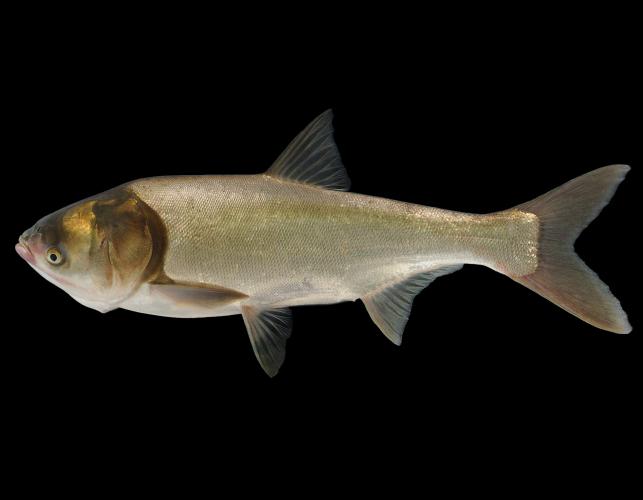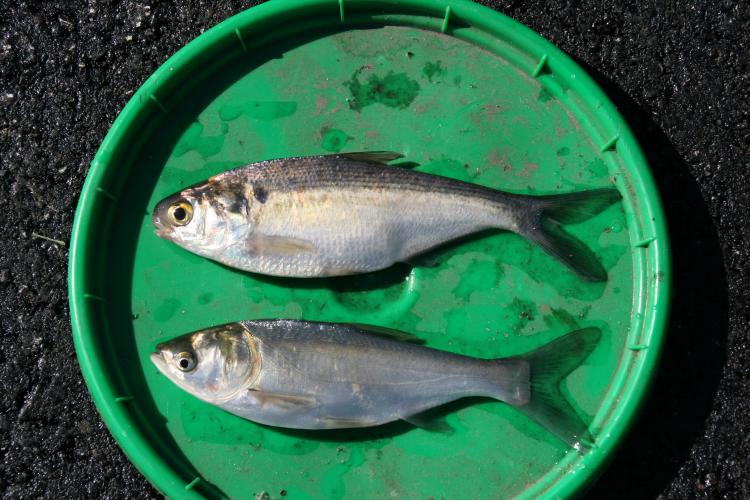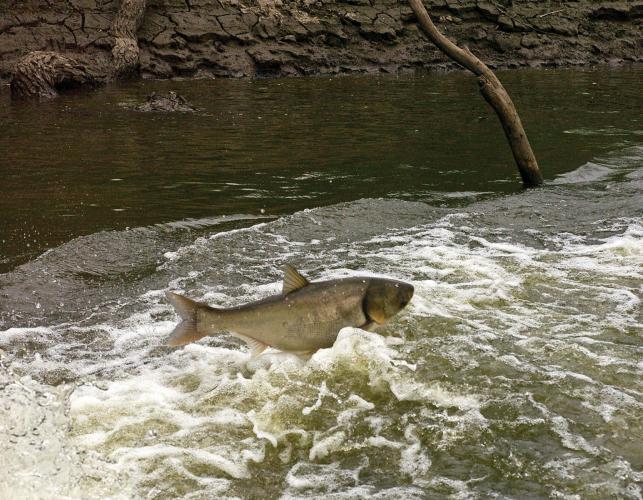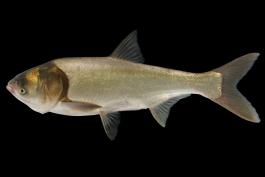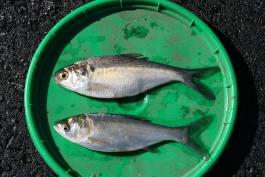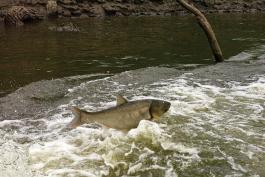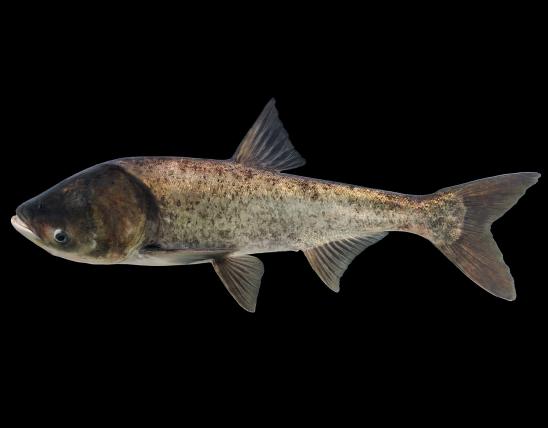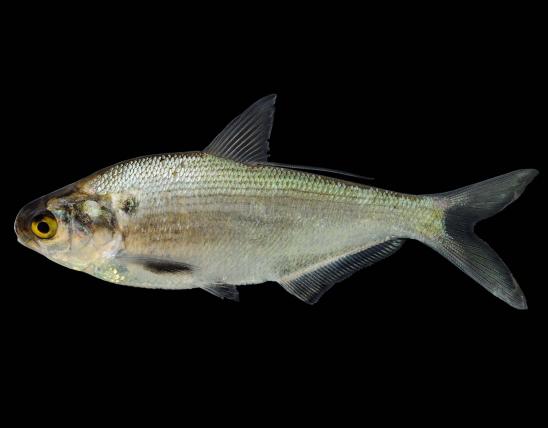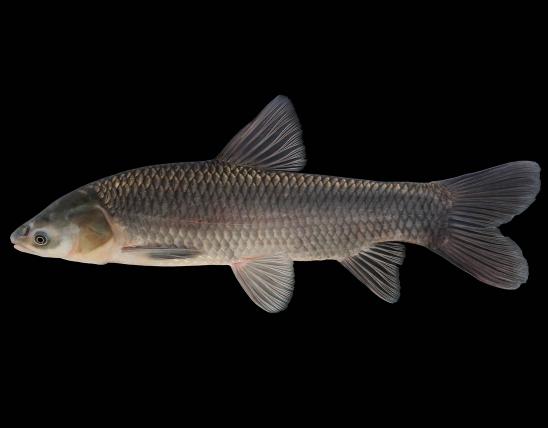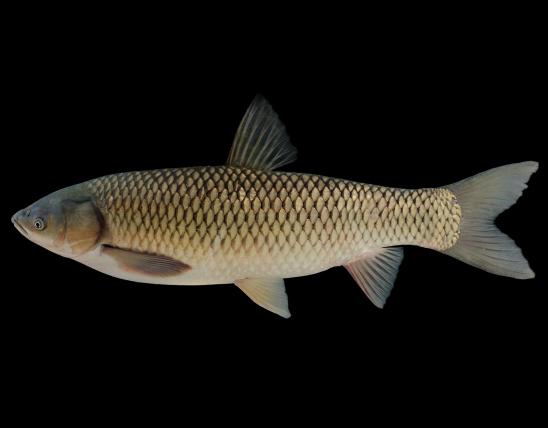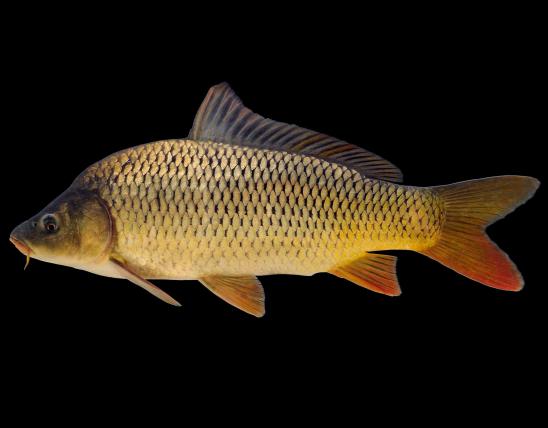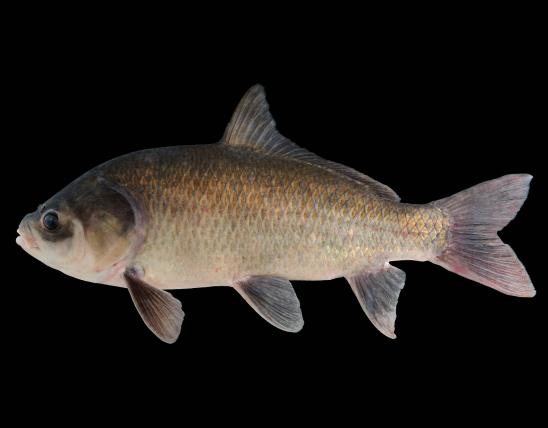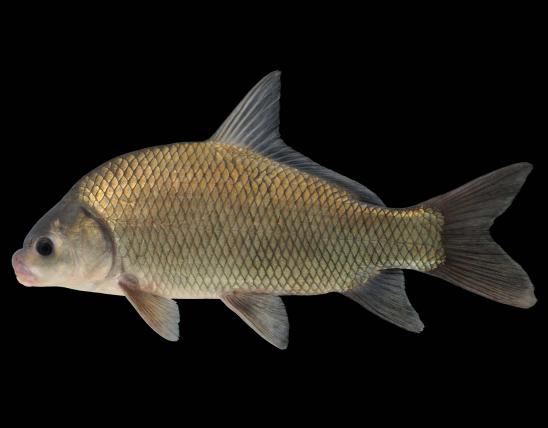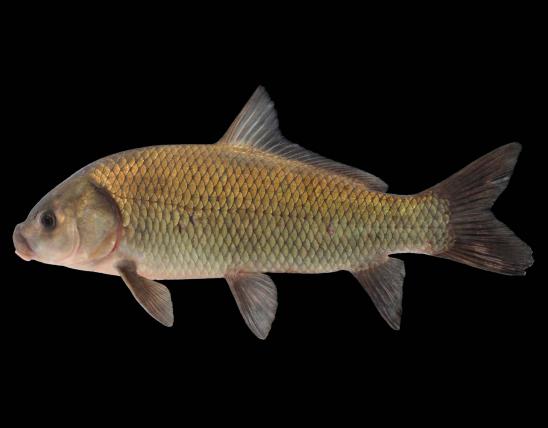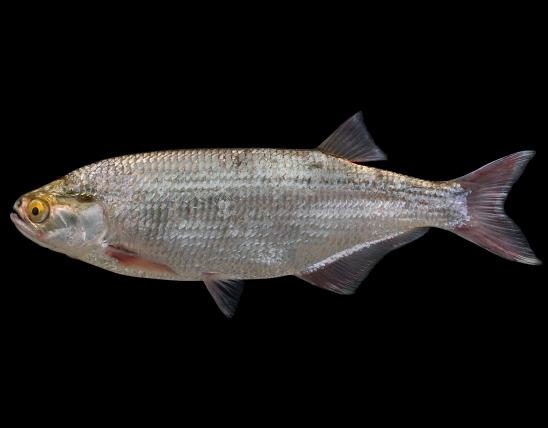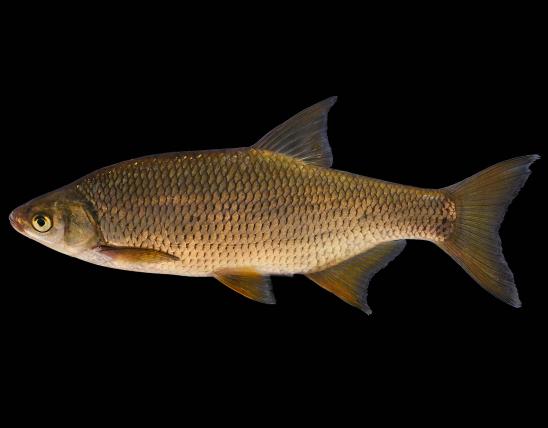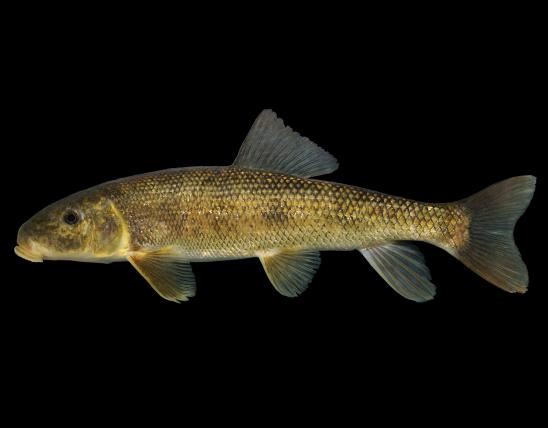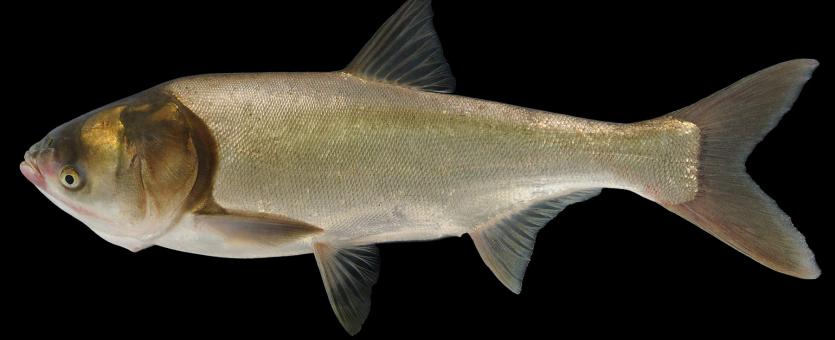
The silver carp is a large, deep-bodied fish with a broad head, upturned mouth, and very small scales. The eye is located far forward and in the lower part of the head (the upper edge of the eye is on a level below the front of the upper lip). There are no dark splotches.
Similar species: Silver carp are distinguished from bighead carp by these characteristics:
- The belly keel extends forward from the vent (anus) nearly to the throat (well past the bases of the pelvic fins, to the bases of the pectoral fins).
- The rakers on the first gill arch are fused into a spongelike structure.
- The head goes more than 3 times into the standard length.
- The eyes are relatively higher on the head.
- The head is relatively smaller than that of the bighead carp.
- There are not dark splotches.
Total length: 12 to 24 inches; maximum length 48 inches. Weight to 45 pounds or more.

Large rivers and lakes throughout Missouri.
Habitat and Conservation
Silver carp are schooling fish that live in open water. Adults leap from the water at any disturbance. Found in large rivers and the lower reaches of their tributaries, floodplain pools, lakes and reservoirs, and reservoir tailwaters. Native to big rivers of eastern Asia, especially China. Introduced in United States to help improve water quality in wastewater treatment plants by feeding on very small plankton. MDC and its partners are trying to contain the spread of this fish in Missouri.
Food
Young feed on plankton strained from the water column. Adults feed on bottom detritus and algae. A muscular "sucking" organ pulls water and suspended food into the large mouth and into a spongelike gill structure. The sucking organ produces large amounts of mucus, enabling it to trap even the smallest food particles. Thus it is very efficient at filtering tiny food particles, more efficient than the bighead carp.
Status
Invasive, nonnative species. It is illegal to use this fish as live bait. Do not collect, transfer, or dump this fish! In its native range along the Amur River in China, it has been cultured for centuries and is an important food fish. But here, this large, long-lived, efficient eater can outcompete our native plankton-feeding fish. It is of little value as a forage fish, and the take from anglers is minimal.
Life Cycle
Mature at 4 years or more; maximum lifespan exceeds 12 years. Spawning is triggered by a rise in river level following rains. Spawning occurs in open channels of large rivers and the eggs are suspended in the current until they hatch, in about 2 days. A single large female can produce 500,000 eggs. This species is not known to successfully spawn in ponds or lakes. Silver carp can reach 4 or 5 pounds in one year.
Human Connections
Silver carp are used as food in other parts of the world and have been known to make up more than 90 percent of the commercial fish catch (along with bighead carp) in introduced areas.
In Nepal, silver and bighead carp are farmed in underwater cages set in lakes, much like chickens kept in coops. In the late 1980s, University of Missouri professor Jack Jones helped refine this system by figuring out how to set the cages vertically in the water, so the fish can move to the water depth where their planktonic food is most plentiful at any given time, and grow most quickly. It's an inexpensive fix that gave a huge boost to that country's lower-caste people. This improvement in that region's aquaculture helps prevent starvation in one of the world's poorest countries.
When startled, large silver carp can leap from the water and injure boaters.
When people introduce nonnative organisms into ecological systems, it can upset the natural balance and imperil the existence of native plants and animals.
Ecosystem Connections
In Missouri, this nonnative species has become abundant and competes with Missouri's native plankton-eaters, including paddlefish and gizzard shad. Thus it is very destructive to native fisheries and to the overall balance of nature.
